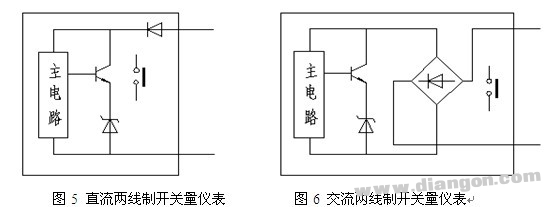
This article provides an in-depth analysis of various common interface circuits used in PLC digital input modules (DI modules) and sensor instruments. It explores how different internal structures of DI modules and sensor outputs affect wiring connections, ensuring correct instrument selection and proper on-site installation. The goal is to help engineers make informed decisions during the design phase and avoid errors in real-world applications.
1. Introduction
In engineering projects, dealing with various types of instrument wiring can be challenging. To ensure that the selected instruments are correctly connected to the PLC, it's essential to understand both the internal wiring of the sensors and the circuit structure of the PLC. This knowledge helps prevent miswiring and ensures reliable operation. Understanding the input and output circuits of I/O modules and common sensor interfaces is crucial for successful system integration.
PLC DI modules often use optocouplers to isolate external signals from the internal circuitry, protecting the PLC from interference or damage. The optocoupler’s LED is activated by the external signal, which then turns on the phototransistor, allowing the signal to reach the processor. This isolation is key to maintaining system stability.
Most DI modules have a common terminal that connects to the positive side of the optocoupler or the negative side of the phototransistor. Sensor outputs, on the other hand, can be dry contacts, active outputs, or high/low level signals. Matching these properly is essential to avoid connection issues later on.
2. Classification of PLC DI Modules by Input Type
DI modules can be classified based on the type of power supply they use: DC or AC. They can also be categorized by current flow direction—source or sink type—and by the configuration of the optocoupler’s common terminal—common anode or common cathode.
3. DC Input Circuit
DC input circuits typically operate at 24V DC. These circuits require the external signal to be a passive dry contact or an active switch. When the contact closes, current flows through a resistor, the optocoupler’s LED, and back to the COM terminal, triggering the phototransistor. This allows the PLC to detect the signal. DC inputs are commonly used in clean environments where fast response is needed.
4. AC Input Circuit
AC input circuits handle voltages like 120V or 230V. These circuits include a step-down transformer and a rectifier bridge before the optocoupler. While this makes them more reliable in harsh conditions, the added components increase signal delay. AC inputs are often used in environments with dust, oil mist, or other contaminants.
5. Current Flow Direction
Depending on whether the current flows into the common terminal (sink type) or out of it (source type), the wiring configuration changes. Some modules allow switching between the two using an S/S terminal, offering greater flexibility in installation.
6. Sensor Output Circuits and Their Connection to PLCs
Sensors such as pressure switches, flow switches, and temperature switches can have various output types. Passive dry contacts are simple and versatile, while active two-wire or three-wire sensors may require attention to polarity and signal levels. NPN and PNP open-collector outputs also differ in their behavior, requiring specific wiring configurations depending on the PLC module type.
7. Conclusion
Given the variety of sensor outputs and PLC input configurations, it's vital to thoroughly understand both when designing an automation system. Proper matching ensures accurate signal transmission without additional components, leading to reliable and efficient system performance.
Universal Capacitive Touch Pen,Universal Stylus for Touchscreen Devices,Dual System Universal Stylus,Universal Touch Pen,Universal Stylus for Tablets
Shenzhen Ruidian Technology CO., Ltd , https://www.wisonen.com